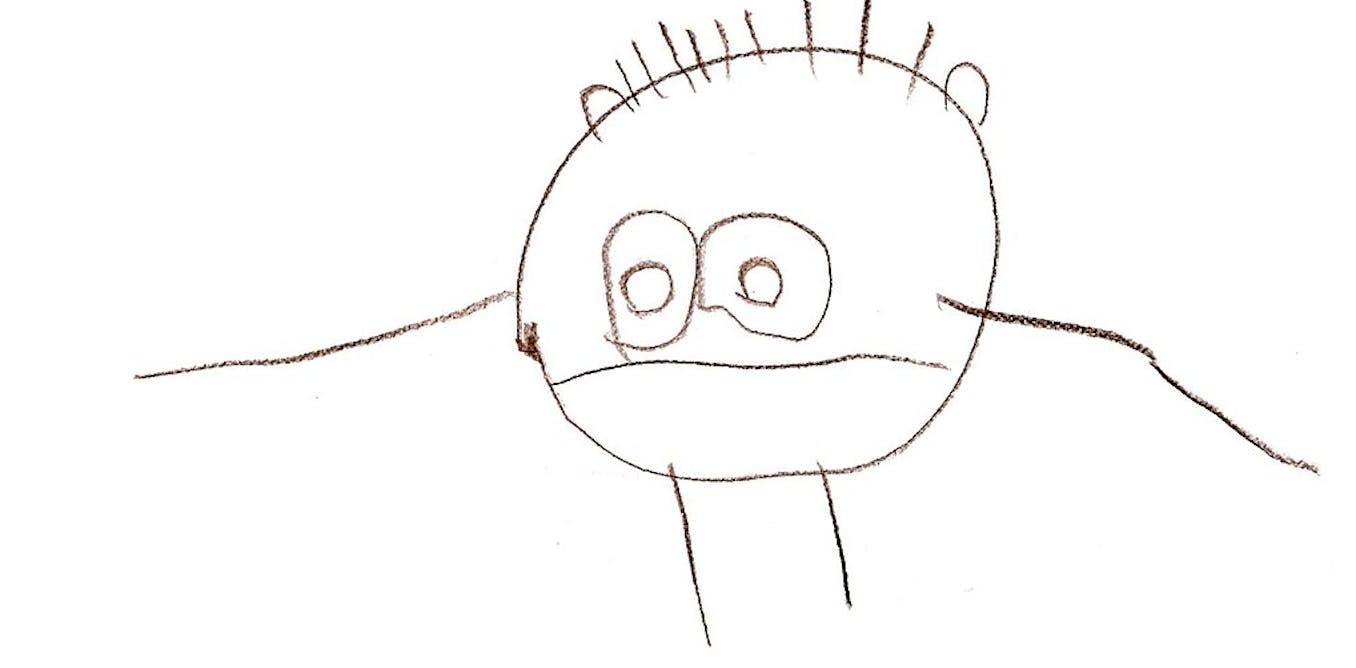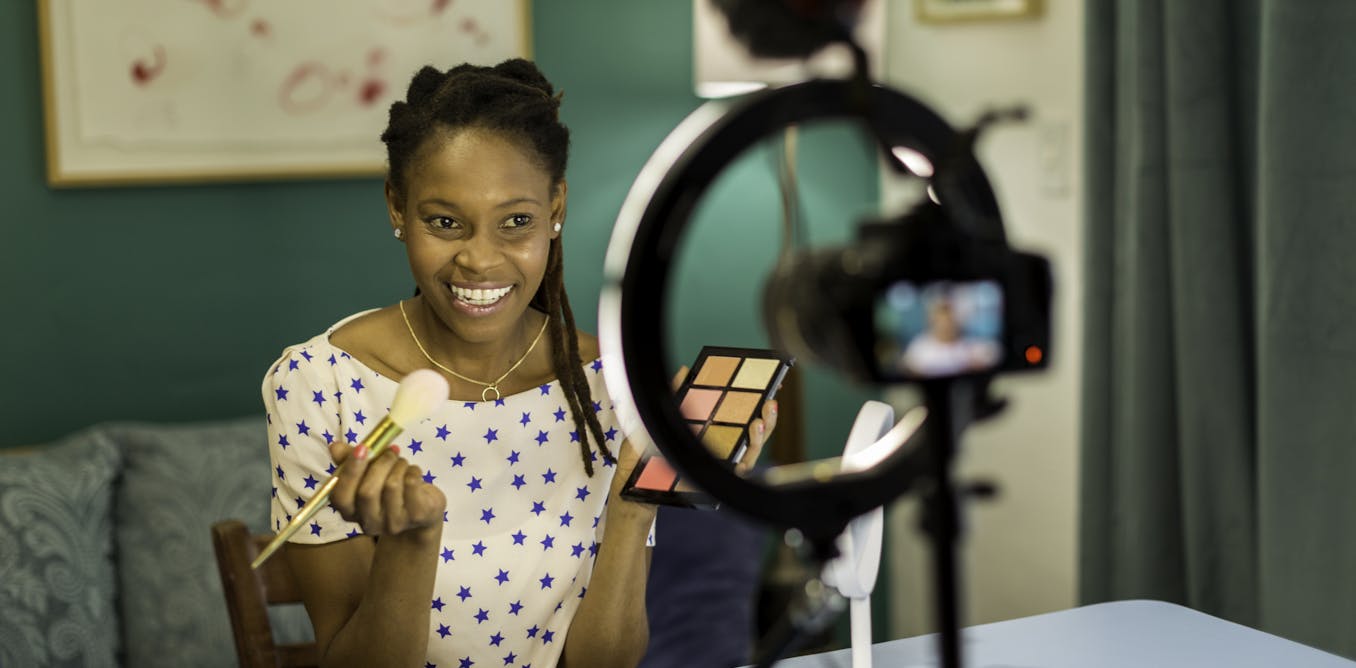The Tormentor (Full Episode) | Dog Impossible
In the full episode of “The Tormentor” from the series “Dog Impossible,” dog behaviorist Matt Beisner works with a challenging case involving a dog named Pax, who has displayed aggressive behavior and has bitten people. Pax was obtained at just four weeks old from a sketchy and potentially abusive situation, which has likely contributed to his fear and aggression. Matt takes a compassionate approach to working with aggressive dogs, seeking to rehabilitate them with respect, trust, and love.
During the home visit, Matt observes Pax’s behavior and works to establish a sense of safety for the dog. He learns about Pax’s triggers and thresholds for stress, and begins to work on defusing Pax’s aggression. By approaching Pax with a calm energy and non-threatening manner, Matt is able to get Pax to downshift and lay down, a small but important victory.
The episode highlights the challenges and the hope faced by Pax’s owners, who are desperate to help their dog and are fearful that, without intervention, Pax may be put down. Matt’s ultimate goal is to help Pax learn to calm himself and socialize with other dogs, in order to give him a chance to live a happy and safe life. The episode showcases the commitment and compassion that is required to work with challenging cases and demonstrates the potential for transformation and hope in even the most difficult situations.
Watch the video by Nat Geo WILD
MATT: This whole house is fear and violence. If these guys don’t do the work, they’re probably gonna get a dog killed. BRYANT: The bulldogs are getting more and more aggressive towards each other. RIDDHI: Pax bit his forearm. MATT: This dog is a powder keg. Easy, please. It’s okay. Okay. STEF: Just look at his whole demeanor. MATT: He is scared and he doesn’t have somebody that’s standing up for him. I want him to get in movement and rhythm with me. You just haven’t been taught social manners. There we go. Good boy. I’m Matt Beisner, and I work with aggressive dogs. I promise you I’m not trying to hurt you. I take the dogs other people won’t touch. You do not want to be a monster. And rehabilitate them with respect, trust and love. WOMAN: I cannot believe how calm he is.
MATT: Because I know there are no bad dogs. ♪ ♪ ♪ ♪ I’m on my way in to work with a dog named Pax, P-A-X. Ironically enough, his name is supposed to mean peace. He has at least one bite. Apparently they can’t have anybody come in the home unless he’s on muzzle.
My process with dogs usually begins with a house call. I come into your home, it’s about two and a half, three hours. I just want to sit with you, listen to you, observe what’s happening with your dog, and then things just evolve from there.
I don’t know how dangerous Pax is really gonna be until I meet him. RIDDHI: We have two dogs, Pax and Emma, and Pax is the problem child. RAYHAN: Anything can make him snap. RIDDHI: I feel very attached to him. RAYHAN: Starting at three months we started to see issues, nipping at people. And then at four months he bit somebody. After that, there were other incidents as well. There’s always a chance that he might bite someone. RIDDHI: It’s really, really dire. We need to get Pax help, and it needs to be right now. MATT: Hi. RIDDHI: Hi. How are you? MATT: Matt Beisner. Who’s this one? RAYHAN: This is Emma. MATT: Hi, Emma. Let’s just sit down and… Generally what I’m getting when I walk into a house, I’m tall, I shave my head, I wear dark clothes. I know I’m basically a walking trigger. 90% of aggression in dogs is fear based. And knowing that, the question is how do I set this dog up to feel safe?
I’m not gonna hurt you, and you’re not gonna hurt me. Okay? Clearly he’s pretty scared, and it looks like he could be really dangerous. How old was he when you got him? RAYHAN: He was really small. RIDDHI: One month. RAYHAN: Yeah, one month. MATT: Four weeks old? RIDDHI: Four weeks old.
RAYHAN: Yeah, actually we found him online, and when we went there, it was really sketchy. RIDDHI: His mom was like pretty emaciated. RAYHAN: We actually didn’t want to take him that early. We wanted to give him at least two months with his mom.
But they were like, “We need to get rid of him now, and if you don’t want him, we’re going to give him to someone else.” MATT: You may be the only people that I’ve worked with that got a dog at four weeks old. If dogs don’t get what they need
In the first 10 weeks of development, the brain doesn’t wire properly. And that you got him from a really dicey situation, at the very least neglected, if not actually abused or watching abuse. It makes sense that he would display the kind of aggression that he has.
Do you want to get that muzzle off so you can let me know what you really think about this? Clearly Pax has some stunted development that has left him crippled with fear and left him no skills to deal with that stress. Ultimately, that can manifest in violence and aggression. Have you had incidents in the home with him where he’s bitten people? RAYHAN: There was one time with each of us; he bit my arm once and then with her. RIDDHI: Upper leg. MATT: Uh-huh. Did it puncture? RIDDHI: Yeah. RAYHAN: Unfortunately there was one time, my friend was telling a story,
And he got animated and put his hands up like this. MATT: Uh-huh. RAYHAN: And Pax just like lunged. MATT: Was it like a one-two or did he go? RAYHAN: Yeah, it was a one-two. It was… MATT: There’s the hands thing you were talking about. RIDDHI: Right. RAYHAN: Yeah. MATT: Okay.
It can be agonizing for the owners during a home visit, like I’m just here setting off their dog, but in reality I’m getting key information. What are the dog’s triggers? What’s the threshold for stress? RAYHAN: We feel very stuck in life and with him. I feel bad. It’s like he just puts this like darkness on everything, and it’s not his fault. We care about him so much and we have a very strong feeling that if we give him up, that he’ll probably get put down. MATT: Yeah. Rayhan’s not wrong about this.
The majority of the dogs that get put down in Los Angeles are pits and pit bull mixes, so turning this around for Pax is a matter of life or death. I want to move to a different experience for him and that is with me sitting here, but other than that,
I just want to see what it’s like for him. It gives me a place to start from. Stay there for a moment. Okay. Give me the long end of the leash. Thank you. Okay, there it is, there’s the stillness, and now he’s, there goes the ears. Right, he’s ready to pop at me.
Pax has been barking and growling at me, but now he’s gone still and silent, which for a lot of dogs means they’re about to attack. He’s definitely trying to work an angle. Hand me that long end of the leash behind your back. And I promise you I’m not here to hurt you.
Okay, let go. I got it. I don’t want to hurt you. I just want to see what we can do, okay? In order to help defuse Pax’s aggression towards me, I approach him with a calm energy and a non-threatening manner. Let’s sit down. We gotta do this together. Okay?
I want him to read my energy and downshift. There’s the stillness that his pupils are so dilated. Yeah, you want to lunge at me when I sit down, don’t you? But he’s still seeing red and he can’t learn when he’s in that state and being edgy. Yeah, it’s too much.
He’s one of the more dangerous dogs that I’ve worked with. Definitely. It’s not gonna happen. We’re just gonna keep going through the same thing, and it’s gonna create more stress for him. I’d you to put him back in. Good boy, Pax. Good boy, Pax. I’ll take that. Pax chose to downshift and lay down. It’s small but it’s a win, and at this point we need to keep reinforcing that. I’d be very detached about how and when he gets affection. You’ve gotta wait till he’s calm.
As long as he stays calm, you can keep petting him. Neurologically, I want him to understand that when you are calm and you stay calm, we will give you all the affection you can handle, and you are going to reinforce what he needs most
To be able to stand a chance to go out and change in the world, which is his ability to calm himself down. Next steps, we’ve gotta get Pax out of the home and into the Zen yard to socialize with other dogs.
And then we can use that as a bridge to get him back in the home safely interacting with other people. RIDDHI: We really need Matt’s help. RAYHAN: It’s like every day is another chance that something bad might happen and we have to put him down.
RIDDHI: That is kind of like our last resort and our last hope. MATT: Alright, kid, I’m gonna walk by. (barking) That a boy. I want to talk about the presidents. They are five bulldogs named after presidents. In the home there is such regular fighting that the owner has a fight breakup stick on the couch next to him. The dogs break into a fight and he pulls the break stick out, breaks it up, puts them back.
This is a regular occurrence, but they’re actually puncturing each other, and the owners have been bit breaking up the fights. WOMAN: Are they all rescues? MATT: Some rescues, some come from breeders. I’m gonna do a private session with them and we will have them coming in. Cool? BRYANT: Calm down, please. I’m Bryant and this is Justin, and we are the parents of five bulldogs. ♪ ♪ ♪ ♪ JUSTIN: The five dogs are our children, we love their big paws and their big fur and rolls, and I just love having these hippos run around
And knock you over in the house. The problem now is as the days go on, the bulldogs are getting more and more aggressive towards each other. You think they’re okay at times, but then within a snap of a finger, they lunge towards each other. BRYANT: We’re concerned about the dogs’ safety and our own safety when they are aggressively going after each other. But we’re also worried about other people’s safety that come to the house. JUSTIN: Right now we don’t feel totally comfortable in our home; we’re always tensed up and stressed
And not knowing what’s gonna happen next. Dog room’s on the right here. MATT: Okay, cool. Do you have the ones that are prone to fight? BRYANT: They’re separated in that room. MATT: They’re separated? Okay. BRYANT: Yeah. BRYANT: So I tend to think it’s more Roosevelt who starts it.
Eisenhower will back off, go into a corner, so he then jumps first and then it starts. Truman, the youngest one, when we adopted him, he was a calm puppy, very nice and gentle. He’s now starting to jump into those fights. Hey, hey, hey, hey. It gets a little scary. There was one time he bit me because he was right here and drew blood.
MATT: Stability needs to happen in this home. If these guys don’t do the work, they’re probably gonna get a dog killed. Really the issue is between Roosevelt and Eisenhower, but it creates a madness amongst the five. BRYANT: All day long is barking, aggressiveness. MATT: Alright.
BRYANT: It takes a toll on like our personal lives. MATT: That sounds really stressful. It sounds like Murdock and Lincoln are innocent bystanders to this dangerous dynamic that’s happening with Roosevelt, Truman and Eisenhower, so I want to look at these three troublemakers and see what’s really happening here.
Alright, we’re gonna play this one at a time. BRYANT: Okay. MATT: And I want the two of you to ignore the dog completely, okay? The first step to seeing what the problem is, is teaching Bryant and Justin how to detach from their dogs. I start with Roosevelt since he’s getting blamed
For a lot of the fighting. Let’s bring the tormentor out. Always when I come into the home I ask the humans to ignore the dogs, ’cause I want to see two things: what does the dog do with its humans, and what’s the dog do with the stranger.
The right side of the face, is that… JUSTIN: That’s from Eisenhower. MATT: Yeah. JUSTIN: That’s exactly where they bite. MATT: Thank you, Roosevelt. We’ll see you in a little bit, buddy. Oh, his own, Roosevelt seems like a typical bulldog, but there’s something in his relationship with his owners
And the other dogs that’s driving him to aggression. I’ll bring Truman out. Just gotta give us some space. Come on out, kiddo. Come on. BRYANT: He’s the skittish one. MATT: Yeah. Come on, Truman. JUSTIN: He has a questionable history, whereas we first brought him home, he wouldn’t even leave his kennel.
You could tell he was afraid. MATT: Come on, Truman. Come on out. You want to see what we’re doing out here? I’m just here to help you. It sounds like things are a little bit scary. Let’s go see what’s out there. Let’s go check it out, come on.
We’re gonna take a walk together. Here’s what we’re gonna do. I’m not gonna make you do anything, but we’re gonna see about getting out in this world together, okay? Come on, let’s keep walking. I’ll walk with you. I can see you’re scared. Oh, my buddy. I can see you’re scared.
I’m struck by how afraid Truman is. Truman is crippled with fear; all he wants to do is get back to his crate. It’s kind of heartbreaking. Bulldogs are not aggressive by nature, but if they’re not socialized as puppies, it’s likely they’re gonna become aggressive. His training is gonna be about getting comfortable
And being able to trust in the world. My next move is to bring Eisenhower out. Let’s go sit down on the couch, see what happens. Hi. Okay. (barking) Yeah. BRYANT: Eisen. MATT: A lot of fear, these dogs have a lot of fear. Do you have any concern that he would lunge at the cameras? JUSTIN: I don’t think immediately. I think… MATT: Tss! Easy, please. It’s okay. JUSTIN: Eisen, no. Eisen, no. JUSTIN: Eisen, no. Eisen, no. MATT: Okay. MATT: Eisenhower’s fear is pushing him
Towards the edge of violence. That’s the theme of this whole house, is fear and violence. In a multi-dog household, a secure pack creates a safe environment. In a home like this, the sketchy backgrounds of some of these dogs, combined with insecurity, means there’s jockeying for position. Go ahead and get him back. JUSTIN: Come on. MATT: The relationship between these three dogs is toxic. There are varying degrees of anxiety and fear in this home, and the fear that is the strongest is what leads to the most aggression. JUSTIN: Yeah. MATT: So if we create more security in the home,
Then there is less of a reason to be afraid. BRYANT: Overall I was surprised to find out how much fear the dogs do have in causing the fights. MATT: So, there’s a few things I want to see happen in the next month. There’s no incident. If you commit to this 30-day, no-incident window,
You just plan rotations so there’s no risk. If they’re not together, we don’t have a problem. If we just take fighting off the table, then we change the way we live with the dogs, they change their behavior. BRYANT: The hardest thing for me moving forward
Is just staying consistent every day for the next month to help solve the problem. MATT: I definitely would like to see Eisenhower at the Zen yard. I’d love to see Truman there, it would probably be mind-blowing for him. JUSTIN: Yeah. BRYANT: Right. MATT: And to get Roosevelt in there, too.
JUSTIN: Oh, sounds a plan. MATT: Alright. MATT: These dogs desperately need supervised dog socialization. If we work to socialize them at the Zen yard, we can control their environment and then work to repair their damaged relationship. JUSTIN: Great, thanks so much. BRYANT: I appreciate it. Thanks so much. MATT: Stay with the work.
♪ ♪ I really dig what happens in the home sessions, but the other part of our work is what we do at the facility, the Zen yard. You can come on in and I’ll show you the yards. My wife Brooklyn and I started the Zen Dog about six years ago.
The Zen Dog is a company that believes that there are no bad dogs. Most of the dogs that come to the Zen Dog are under socialized, they’re kicked out of other daycares, they’ve had really awful backstories or they’re just behaving naughtily. I grew up watching Mister Rogers. Come on, friend. I’m gonna show you the board with all the advisories of the dogs who are very, very dangerous. For example, BL5D. Bite level five dog. That means that it’s a multiple puncture, and it’s so severe that it requires hospitalization. Bite level six dog.
This dog has killed another dog, and they all show up here, like the island of lost children, and bit by bit, we find a way to help them feel more comfortable and more confident. When I help the dog that nobody else wanted to help and that dog changes for life,
The payoff is as delicious as ten puppies running around licking my face. Today Truman, Eisenhower and Roosevelt are coming into the Zen yard for boarding and training. Justin and Bryant have not been able to keep the dogs separate and peaceful, so we’ve decided to have them come stay with us for a week so we can work with them in a controlled environment.
JUSTIN: Hey, hey, hey. Calm down. MATT: Coming in with Eisenhower. I’m starting to work the presidents with my colleague, Stef. She’s a super talented dog trainer. And Caitlyn, our manager, is providing backup. I want to see Roosevelt and Eisenhower together first since the owner said that they’re in the middle
Of most of the fights. So I want to see for myself what they do to trigger each other. But I create a safe boundary between the two, so this doesn’t end up in bloodshed. Roosevelt is not happy about his brother coming in. Eisenhower is clearly threatening Roosevelt right now.
STEF: Same thing on my end. Hard stare, arms out. MATT: Yeah. STEF: Just stillness and staring like, “I’m coming for you.” MATT: Yeah. My sense is that if I let Eisenhower out right now off-slip, that he would attack Roosevelt. STEF: Agreed. MATT: Yeah.
MATT: Now we have a new and not uncommon behavior from Roosevelt which is I’m just gonna lie here but I’m gonna lie here in a place that actually forces your hand. STEF: Yeah. I’m gonna lie here and I’m gonna block the doorway. I’m gonna create my own boundary. MATT: Yeah.
STEF: And he’s eyeing him right now. MATT: Right. STEF: Oh, oh, growling. MATT: Yeah. Here we go. Okay, now the growling’s increasing. Because what’s happening is Roosevelt’s not giving. This is real time what happens in the home. MATT: There it is. STEF: Scared me. MATT: Yeah, got me, too. So if we don’t have them secure, they’re fighting right now. It was really interesting that Roosevelt made the first lunge even though Eisenhower was the aggressor. Even after Roosevelt laid down essentially saying, “Leave me alone, dude”, Eisenhower wouldn’t back down.
Roosevelt doesn’t want to initiate a fight. What Roosevelt has discovered out of necessity is he has to defend himself. STEF: Mm-hmm. MATT: Alright. Let’s do a swap. Next I want to see what Roosevelt’s relationship with Truman is like. Okay, come on out. These two aren’t showing the same type of aggression
With one another right now, so it’s a chance to get them a little bit closer together and see what’s going on. Let’s go for a smell. STEF: It’s your brother. MATT: Really? CAITLYN: Butt to butt. MATT: I mean, that’s just weird. That’s not natural.
Truman’s grown up with this dog, and they have no apparent desire to actually connect with each other. And Truman keeps making eye contact and Roosevelt keeps turning away. What do you think about going off-leash? STEF: I feel okay about it. MATT: Yeah, I do, too. Shall we? STEF: Yeah.
MATT: So the one thing for us to watch for is anything that could become resource guarding. Tss! Easy. Yeah, there’s something punky to me about what’s happening here. STEF: With Truman? MATT: Yeah, ’cause there’s a water bowl right there. This is not about you drinking water, Truman,
This is actually about who is drinking the water bowl that you need to go drink out of. And he’s walking differently. There’s a posturing about it, right? Boom, boom, boom, boom. STEF: Like you are lingering a little bit too long, kind of getting on my nerves, Truman. MATT: Yeah. And Truman–Tss! Hey, uh-uh-uh-uh-uh-uh.
MATT: There’s a posturing about it, right? Boom, boom, boom, boom. Hey, uh-uh-uh-uh-uh-uh. STEF: Punky, punky, punky. MATT: Yeah. MATT: That is how you start a fight with a dog that fights to defend itself, that doesn’t want to be with you. Okay? STEF: And then he’s cornered himself, like I don’t feel good.
This feels a little too familiar. MATT: Yeah. STEF: Just look at his whole demeanor. MATT: Yeah. STEF: His ears are back, his head is low and hunched. MATT: And he’s drooling. Right. STEF: Lots of drool. STEF: And his eyes are hanging heavy. MATT: He’s just like, this dog just shut him down.
Hi, sweetheart. STEF: And he keeps making eye contact, though. MATT: Like, “Help me.” CAITLYN: With everybody. MATT: Yeah, “Help me.” Yeah. He is scared, and he doesn’t have somebody that’s standing up for him. STEF: Yeah. CAITLYN: Scared. CAITLYN: Makes me actually see Roosevelt quite different,
’cause I just saw him and Eisenhower as these big bullies. MATT: And my heart really hurts for this dog. During the home session, the owners blame Roosevelt for starting most of the violence, but he’s actually the victim here. Let’s get him out of here and secure and let’s go right into Eisenhower/Truman.
STEF: I got Rosie. MATT: Truman, you can have the yard, buddy. STEF: Coming out. Come on, Eisenhower. Let’s go. So different. MATT: Right, and he doesn’t come over and say hi to his brother. CAITLYN: And Truman’s head is lower. MATT: Yeah. CAITLYN: He has that more like, I’m afraid,
I don’t want to be in here. MATT: Now look, Truman… CAITLYN: Wants to go. MATT: Yeah, okay, let’s pause right there. That’s how that looked to me. Yeah. Truman wants out. CAITLYN: He just wants to get out. STEF: And all he wanted to do is stay in and punk Roosevelt the whole time.
MATT: Right. Truman became a different dog while he was alone with Eisenhower. He totally shut down and was overrun with fear. It’s clear Eisenhower’s on the top of this social ladder. So we’ve got the same cycle of violence happening in the house, because you’ve got this one who started it on Roosevelt
And Roosevelt began to have to defend himself. Then you get Truman who says, “Oh, this is how this operates, we punk Roosevelt.” He’s learning violence from Eisenhower for sure. It’s not just a pecking order, it’s the bitch ladder. But a good parent does not allow their dogs
To have these kinds of relationships without healing. Moving forward, we need to socialize these dogs separately. They need to realize that they can have relationships with other dogs that aren’t built on fear and aggression, but can be healthy and secure. This didn’t happen overnight, so it’s not gonna get fixed overnight.
We are way further down the weeds than I thought we were gonna be in terms of their dog socialization, but it’s all workable. So I know there’s hope here. The way we work with dogs is different in that we don’t use any conventional training methods. STEF: Coming in with Pax. MATT: We’re not using treats, shock collars, choke chains, prong collars, commands. Everything is designed for the dog to be able to think for itself, ’cause a dog that can think for itself
Is not gonna be reactive. This dog has got some dangerous issues. He was in blackout aggression in the home. In the home visit, we couldn’t even get Pax safely out of the crate. Today he’s letting Stef handle him, so I want to see if Pax can remain calm while being in the yard with another dog. Coming out with Mina. Just because Pax lives with another dog, Emma,
Doesn’t mean that he knows how to behave with dogs he doesn’t know out in the world. Yeah, he certainly seems intent. What’s different about what we do in the facility is we have dogs to help us teach, dogs get to be with dogs that are good role models. If they can be trustworthy,
It’s fundamental to their experience in being alive that they get to be a dog and know what that’s like. STEF: So why don’t we give Pax… MATT: First smell? STEF: Mm-hmm. MATT: Come here, sugar plum. Smelling another dog is the equivalent of saying hello. Pax is gonna smell you, okay? STEF: Uh-uh.
MATT: I’m not gonna let you get hurt. I promise. His breathing picks up, his eyes are bugging out. STEF: Just is rude and pushy. MATT: Yeah. STEF: And like, I don’t really know what I’m doing either. MATT: Under-socialized. STEF: Come on. MATT: It’s interesting that I got a few eyes there.
STEF: Let’s go ahead and get the hose out just in case Pax does decide to go after you. MATT: A hose is a great inhibitor. We spray the hose so that it’s near the dog. We just want the dog to know that this is part of the communication.
He’s got eyes on me, I can tell. STEF: He’s terrified of the hose. You bring it out and he almost shuts down and doesn’t recover. And there he goes. He just saw you go for it. MATT: And now he wants to get the muzzle off now that he sees me as a threat.
STEF: Mm-hmm. MATT: He seems particularly keyed up. I’ve got no hose, okay, I’m sorry you got scared. Didn’t mean to scare you. STEF: That’s how sensitive Pax is to his fear triggers. MATT: There’s a stiffness about him that usually precedes an attack. This dog is a powder keg.
There we go, let’s let this happen. Okay? Okay? Okay? Take the leash. STEF: He just goes right for the face. Right alongside the neck, too. MATT: Shady. STEF: It’s so needy and so desperate. MATT: And creepy. Pax does not know how to deal with fear. Pax needs to learn how to calm himself.
That’s gonna require detachment and appropriate affection at home and intense socialization here at the Zen yard. The kid doesn’t know he’s not a bad dog. ♪ ♪ MATT: Come on, kiddo. STEF: Let’s go. MATT: Today we’re gonna start socialization work with Truman. We have a surprise party planned for you.
STEF: Let’s go, bud. MATT: This is a dog who’s afraid of almost everything, and on top of that he’s been learning some very bad habits from his older brother Eisenhower about how to interact with other dogs. STEF: Phew. He is just a hot mess. Come on, bud. Good boy.
MATT: We’re gonna start him with Huck, one of my favorites and one of our most secure dogs. I’m surprised that he’s this frightened of Huck. STEF: It’s like a stubbornness and… MATT: Yeah. STEF: He disconnects immediately. MATT: Good boy. Yeah. STEF: And he goes back into like his shell. MATT: Good boy, Truman.
What’s happening here is I’m not pulling, but when there’s a sliver of release, which I can feel, good boy, Truman, by not counter pulling, when there’s a good boy, like that. That’s it right there. Gorgeous. And so in spite of himself, he actually had a dog experience. STEF: Mm-hmm.
MATT: And if I had let him dictate it, he would have been back in the crate, and we would have written this off and said it’s not gonna work. And not only did he just do it, he did it without us having to tell him what to do.
Let’s see if Huck can smell you. I’m just gonna hang onto you here, and Huck’s gonna come over and smell you, okay? So I don’t have any tension on my hand, there’s no tension on the leash. Good boy, Huck. STEF: Good boy, bud. MATT: He’s breathing pretty heavy,
But that was Huck and nothing happened, huh? Now we want to up the ante a little bit by bringing in Licorice. He’s still a secure dog, but a bit more high energy, so I want to see if Truman can still stay calm. Come here, kiddo. Do you want to smell Licorice?
I’m telling you, I asked him if he wanted to smell Licorice and he started moving. Okay, there’s the lip. MATT: Come here, kiddo. Do you want to smell Licorice? Okay, there’s the lip. There is it. Yeah. I saw lip and I felt growl. Licorice was a bit too much for Truman to handle. Licorice got in his space and gave him a few playful barks and Truman shut down. Truman’s pulling right now,
’cause he doesn’t want anything to do with being Truman. He wants “The Truman Show” canceled, and he wants to get out of here and go back to being nothing. STEF: There’s just an overall blanket of nerves and insecurity. MATT: We’re gonna continue intense dog socialization
To help Truman feel more comfortable in his own skin and eventually with his own brothers. Come on, my love bug. STEF: Coming out. ♪ ♪ MATT: Every once in a great while, the Zen Dog will foster a dog; dogs that have maimed humans, dogs that have killed other dogs. We commit to getting them the help that they need so that they can get adopted and put in a good forever home. Alright, we’re gonna go meet Lincoln.
I say that there are no bad dogs, ’cause I was that dog. When I started this whole journey, I was detoxing. Hi, hi, hi, hi, hi. Here, I’ll take my hat off. I grew up making all kinds of choices that put my life and other people’s lives in danger. I was given a second chance, so I look at the dogs as a reflection of my own experience. So this is pretty normal for he and I. The story goes that I look like somebody that he was adopted and returned by, and apparently was never the same dog after he was returned. I have a real soft spot for Lincoln. He’s exactly the kind of dog that’s a last chance dog
That’s been misunderstood and a dog that just needs an opportunity to learn how to relate with human beings. You can see his trust in Amy; immediately he softens. AMY: Hi. Hi. Yeah. MATT: See? You stay there and I’m gonna step in and let’s see what happens. It’s okay. It’s just me. Especially with a dog this reactive, detachment is the key to everything we do. If I remain detached and I don’t provoke him, he will learn to calm himself down. Good boy, Lincoln. You can hear the pause in there.
You could see how that made space for his energy to change. If we change energy, we change behavior, which is what he did. There, you see it? There’s the downshift. Drops his head, the barking changes. The body goes from that tense state that he’s in and now there’s a little bit of movement.
There we go, and he’s closer. That’s the significance of what happened for Lincoln today; he got to face his fear and work through it. If he can work through it with me, he can work through it with anybody else. Good boy. You big, beautiful, bowling ball-headed, you’re like a big walking Thanksgiving turkey.
♪ ♪ RAYHAN: Hello? MATT: Hey, it’s Matt Beisner. MATT: Today, I want to get a sense for how Pax is progressing. I wanted to meet with the three of you and do some walking work. STEF: Might say hello. MATT: We’ve been working with Pax for the last few days
Through some intense socialization training. STEF: You’re doing great, Mina. MATT: Since Pax went home, his owners, Riddhi and Rayhan, have been practicing detachment, making sure they only give Pax affection when he’s calm. That way, they don’t reinforce his anxiety and aggression. RIDDHI: Good boy, Pax.
MATT: I’ll be a little bit further up the path, and I just want to do one pass by first, because I just want to see where Pax is at with me, okay? RAYHAN: Okay, sounds good. MATT: Okay, cool. I’m wearing dark clothes and I do have a hat,
So I know I’m already a walking trigger. So I’m just gonna walk by and we’re not gonna pay each other any attention. ♪ ♪ ♪ ♪ Wow, he’s doing a really nice job. Your leash handling looks great, by the way. You look calm and clear,
And I didn’t see a change in him at all. RIDDHI: No, he just walked by. MATT: Yeah. RIDDHI: Yeah. MATT: Excellent. So why don’t the three of you start walking? And just pay attention really to anything, yeah, there he is shaking off the stress.
Anything that you notice, see there’s a little pull in there. MATT: Oh, yeah, to get the muzzle off, right? RAYHAN: Yeah. RIDDHI: Yeah. MATT: Yeah, okay. Well, I know it’s a big ask, Pax, I know I just dropped in on a walk with you. Let’s switch, let’s turn around.
Rayhan, you take him and we’re gonna walk together. (barking) RAYHAN: Pax! MATT: So why don’t the three of you start walking? Today I really want to focus on Pax’s triggers. Let’s switch, let’s turn around. Rayhan, you take him and we’re gonna walk together. As soon as I joined the walk, Pax is cagey.
We’re gonna do it anyway, kiddo. I just want to see you walk with me. When he encounters stress, he needs to learn to calm himself instead of lashing out. RIDDHI: You’re doing good, Pax, doing good. MATT: We’ll walk together. There we go. That a boy, Pax. Good boy, Pax. I know.
You don’t have to like it, but you’re doing great, buddy. This is subtle, but it’s a big moment for Pax. He stayed connected with Rayhan, he kept moving and he was able to keep his cool. What I saw today was promising in a lot of ways. It definitely stood out to me
That Pax was able to walk by me without reacting. When he did start to react… (barking) RAYHAN: Pax! MATT: His reactions were not as intense. He didn’t stay hot as long as he used to. He actually was able to let it go, as evidenced by the fact that after all of that,
We end up walking together and Pax doesn’t come at me. Good boy, Pax. Good boy, buddy. We’ll talk about what we can do next. Pax has to continue coming to the Zen yard for regular dog and human socialization, otherwise he risks backsliding into dangerous behavior. ♪ ♪ Coming in with Eisenhower.
Eisenhower is the toxic alpha of this bulldog pack at home, and he deals with the stress by bullying and fighting like most human bullies. Underneath it all, he’s literally drowning in insecurity and fear. STEF: Oh, buddy. MATT: This dog is brokenhearted and terrified. STEF: Come on, Nama.
MATT: I’m gonna bring in my delicious dog, Nama. She’s secure in her rank, and she’s gonna show Eisenhower the kind of dog that he can become. We’re gonna have you meet Nama. You just haven’t been taught social manners, so we’re gonna show you in our own clunky human way what that’s like.
We’re gonna come around this way and let’s come right in here and see what’s there. There we go. Good boy. God boy, Eisen. And he looks at me like, “Is that how I do it?” He smelled it like he’d never had an opportunity to do that before. Even this.
I think you’re actually gonna try and throw a little–boom. You see how unassuming, and look it, he checks with Stef to see if that’s okay. STEF: That’s great, bud. MATT: Right? You do not want to be a monster. Smelling Nama’s a really big deal for Eisenhower,
And he couldn’t have done better for where he’s at. I’m gonna hang on to you right here, ’cause Nama wants to smell you. Now I want to have Eisenhower get smelled by Nama, which is gonna require a lot more trust on his part. There we go. There’s the fear.
(growling) Okay, so now we’ve got growling. In his experience, it’s actually not safe to have somebody come up from behind you. We need to keep working on the social experience for Eisenhower, help him get to a place where he feels secure and trusting,
And then he’s got a shot at making things work in the home. Coming out with Ike. STEF: Coming in with Pax. (barking) MATT: Pax has been coming in for regular day play, and he’s making good progress. STEF: Good boy. Hi, bud. Thanks for sitting down.
MATT: Stef has been able to work with him off-muzzle, which shows how far he’s come. Remarkable how different already in holding with you from where we left off in the home. Today I’m hoping he’ll walk with me off-muzzle. STEF: Why don’t you walk next to me for a little while?
MATT: Okay. Hi, Pax. I see you. I see you see me. Since Pax trusts Stef, I’m gonna try and draft off of that energy and hopefully we can transfer his trust in her to me. No, my friend. Come on. (clicks tongue) I’ll take it. Yeah. Hi. (clicks tongue) Let’s walk. Up, up, up, let’s walk. MATT: That a boy. There we go. STEF: Good. MATT: There we go. We’re gonna keep moving. I want him to get in movement and rhythm with me. Good boy, Pax.
I know that the momentum is gonna help him stay unstuck. There we go, we’re gonna take this corner, too. The momentum of walking helps dogs move through their anxiety and fear. That’s why movement is such a big part of our training. STEF: Good boy. MATT: Good boy, Pax.
This feels like a big breakthrough for Pax. It’s amazing to me how far he’s come, but his owners need to understand there is no room for error. STEF: He needs clarity. He needs direction. MATT: Yeah. STEF: There’s no room for wishy-washy kind of communication.
MATT: And he needs a profound amount of respectful detachment. ♪ ♪ ♪ ♪ STEF: Oh, good boy. MATT: Good boy. MATT: Justin is scheduled to pick up his bulldogs today and take them home. MATT: Thank you. STEF: That’s rude, sir. MATT: Good for you, Eisenhower.
In order to know that it’s safe to do that, they have to pass one more test here. JUSTIN: Hey, how’s it going? CAITLYN: I’m Caitlyn, Matt’s assistant. JUSTIN: I’m Justin. How’s it going? Nice to meet you. CAITLYN: Nice to meet you in person. MATT: I want Justin to observe us reintroducing the dogs
Together for the first time. The only way they can go home is if they can get along with each other. CAITLYN: I want you to be as quiet as possible. We want to try to be as kind of fly on the wall as much as we can.
So we’ll just peek over and then… JUSTIN: Perfect. Let’s do it. I’ll follow you. CAITLYN: Cool. MATT: I’m gonna start with Eisenhower and Truman. STEF: Come on, bubs. MATT: Ah, I got it right in my mouth. We’re now, like we’re spit brothers, you know that? STEF: Come on, nugget.
MATT: Bring him in if you would, please. STEF: Let’s go, Truman. Good boy. MATT: Let’s go for a smell and see. STEF: Okay. I’m gonna go around this way. Oh, that’s polite, bud, that’s very polite. MATT: There we go. One, two. MATT: Let’s go for a smell and see. STEF: Okay.
MATT: Today we’re integrating bulldog brothers Eisenhower and Truman for the first time before their owner Justin takes them home. There we go. One, two. You would think that these dogs have never done that in the home with each other, like never had a healthy dog smell interaction. STEF: Mm-hmm. MATT: Wow.
STEF: Good job, Truman. MATT: Come here, my bud. Let’s go smell him. Come on. There we go. One, two. There we go. There you go. You did it! That a boy. That a boy! Good for you. Come here, come here, love bug. Hi, friend. There you go. STEF: Look at Truman going in. MATT: Good for you, Truman. There you go. Good for you, Eisenhower. They’ve not actually had direct interaction.
Truman couldn’t do it and Eisenhower couldn’t be trusted. There’s a lot of stuff in here that wasn’t happening before, that’s really positive. STEF: That’s good. MATT: Good boy, Truman. You did great. Yeah, let’s have Roosevelt come in. STEF: So, Caitlyn, you want to just step in and I’ll grab Rosie. MATT: Yeah.
We’re gonna have your brother Roosevelt come out, okay? Okay, let’s see what we got here. Okay. STEF: He is wagging his nub. MATT: Good for him. STEF: Really sweet. MATT: That’s cool, ’cause that’s not what we saw last time between those two. Definitely more engaged, a lot less deferential.
STEF: Right. Want to come in, bud? Alright. MATT: Okay, bring him in. STEF: Come on, Rosie. Yeah! Woo-hoo! Look at you go. Good boy! MATT: Wow. JUSTIN: I was kind of shocked watching them walk into the pen, I kind of thought that they were gonna revert back to the bad behaviors,
But it was nice to see them interact properly. STEF: Good boy! MATT: I feel like I’m watching a hippo run in the wild for the first time. STEF: You are, it’s ’cause you are. MATT: Look at you. That’s beautiful. STEF: Good job. MATT: Yes, we can do a walk, too.
STEF: I got him. He’s not gonna bother you. I got him. MATT: Come on, let’s go this way. STEF: I got him. MATT: Good boy, Eisenhower. STEF: Truman, come on. We’re doing a bulldog show here, Truman. MATT: Hi, Truman. Let’s get past the fear a little bit. STEF: Good job! There you go.
MATT: There we go. Bulldogs on parade. CAITLYN: Go, go, go! MATT: Bulldogs on parade. CAITLYN: Woo-hoo! STEF: You did it, bud! Come on. MATT: Bulldogs on parade. CAITLYN: Good job. Take a break. MATT: Okay, fair enough. You know he’s maxed out. So there’s a lot of great things that Truman’s demonstrated.
Eisenhower’s, you know, smelling in ways that he hadn’t before. Roosevelt seems way more comfortable in his skin. It’s a lot of benchmarks here for them. It’s small, it doesn’t look like much, but we keep seeing these openings of possibilities. They’re at the beginning of the end of fighting ever again.
JUSTIN: I totally notice a difference in terms of smelling the other dogs and not being attached to me, not growling. I feel great knowing they’ll be able to socialize with other dogs and not act aggressively towards each other. It’s amazing. MATT: You and Bryant gotta keep doing the work in the home.
JUSTIN: Yes. MATT: Just do copious amounts of dog socialization. He’s gotta keep coming with some kind of regularity. The good news is that the recovery works exponentially faster than the damage does. If Bryant and Justin can stay committed to this work, it is absolutely possible that this beautiful bulldog family
Can have a happy and safe life together, which is all I want for them. Good boy, Eisenhower. STEF: Hey, how’s it going? RAYHAN: Hi. Good. How are you? STEF: Come on out. You guys ready? Hello, Mr. Pax. Today we’re doing a follow-up session with Pax. It’s interesting. It’s a slightly different bark.
I immediately noticed a change in Pax. Coming in with Pax. His bark isn’t as aggressive, he’s not displaying as much fear. He’s not lunging. So I want to know how things have been going since Matt came over. RIDDHI: Well, we’ve been following a lot of the, like, only acknowledging and reaffirming
His positive behaviors. RAYHAN: Only touching him when he’s calm. RIDDHI: Good boy, Pax. RAYHAN: That seems to have changed a lot. MATT: Excellent. RIDDHI: I’m finding he’s making those like right decisions, like laying down, sitting quicker. STEF: So choosing calm, self-soothing behaviors more quickly is what you’ve been noticing.
RIDDHI: Yeah, I would say like a week and a half ago, I was walking both Pax and Emma, and we saw like three guys with like five dogs, and then they were like, “Oh, if you want, like we can do, like, a little group walk around the whole park.”
And he got a lot of, like, you know… RAYHAN: Socializing. RIDDHI: Socializing, so it was really nice. STEF: I love that. RIDDHI: Yeah. STEF: I love that so much. MATT: Have you ever had an experience like that with him before? RAYHAN: No. RIDDHI: No.
STEF: That’s awesome. I think that’s like a really big step for Pax and for the both of you to take with him. MATT: The news on Pax is really encouraging. This dog was so reactive, I gotta see this for myself. I want to see him with Stef’s dog, Amala, off-leash.
You can take leash off, Rayhan. It’s great that you two are not engaging, ’cause that’s part of the makeup here. STEF: So this is his response to Amala, which is to totally ignore. He’s like, “I don’t want to mess with this girl,” and she leaves him alone, and this is a comfortable place
For them to be, and that’s it. MATT: This is all part of a more mature Pax, a dog that is not only practicing consistently good impulse control, but is making decisions that are about not engaging, about self soothing, about being deferential. He’s not fighting to get the muzzle off.
You don’t see tension in the body, you know, there’s not, the eyes aren’t weird. This I’ve never seen from Pax. STEF: I think it’s amazing. I think it’s an amazing leap that he’s made. MATT: He’s clearly moving into sustainable change. That dog came from a horrific place.
It tells me that there’s something inherent in this work that can help even a dog that’s been as crippled and underprivileged as Pax, that he can be safe in this world, that he’s not a bad dog, and I want that for him. STEF: Really impressed with the way that you guys
Have remained detached this entire time with the ups and downs this has taken. MATT: Yeah. STEF: I think that you’re making all of this possible for him. MATT: Clearly. STEF: Yeah. RIDDHI: I’m very proud of how far Pax has come. Every day he gets better. When I first came to the Zen Dog,
I was at like my wits’ end with him, I was like I’m gonna have to, like, give him up. I was really, really sad. RAYHAN: The Zen Dog definitely gave Pax a second chance at a functional, happy life. Captioned by Side Door Media Services
About Nat Geo WILD
National Geographic Wild is a place for all things animals and for animal-lovers alike. Take a journey through the animal kingdom with us and discover things you never knew before, or rediscover your favorite animals!
Video “The Tormentor (Full Episode) | Dog Impossible” was uploaded on 12/24/2020 to Youtube Channel Nat Geo WILD
































